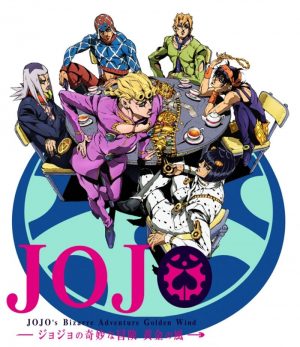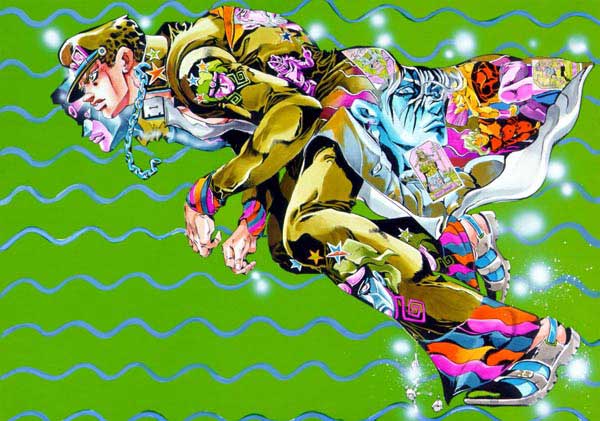
Hirohiko Araki is one of the most unique mangaka working today. His artistic style takes inspiration from classic Renaissance sculptures and fashion illustrations and has transformed over his 30+ years of publishing from an elevated version of ‘80s kitsch to its own wholly original androgynous look. Araki himself is also an unusual guy, deeply influenced by Western pop and rock music, notoriously forgetful, and somehow managing to look like a 30-something despite being 58.
Today, we’ll take a closer look at how the author of JoJo’s Bizarre Adventure started his career as a manga artist and how his many decades of experience have shaped his works over time. Let’s get started!
The Rocky Road to Araki’s Debut
Araki had been doodling manga in his home of Sendai, Japan since about 4th grade, having been influenced by ‘70s classics like Ai to Makoto and his father’s art books of Paul Gauguin (whose surreal color palettes definitely show in Araki’s work). He started submitting one-shots to shounen publishers in high school, but just couldn’t break through. Other artists his age like Yudetamago (of Kinnikuman fame) were getting accepted, so why couldn’t he? He decided to march into Weekly Shounen Sunday’s publishing office and demand an answer, but after he came face-to-face with their intimidatingly huge corporate building, settled for the smaller Weekly Shounen Jump next door.
Luckily, a junior editor gave him a chance and asked him to get his one-shot Poker Under Arms ready for a prestigious awards ceremony in five days’ time. Araki agreed, and this short Western-themed poker shootout story won runner-up at the awards and landed him his debut in 1980! Looking at Poker Under Arms now, its simplistic art and story aren’t especially impressive, but there’s clear potential for a masterpiece buried within. So what did he do next?
B.T., Baoh, and Irene
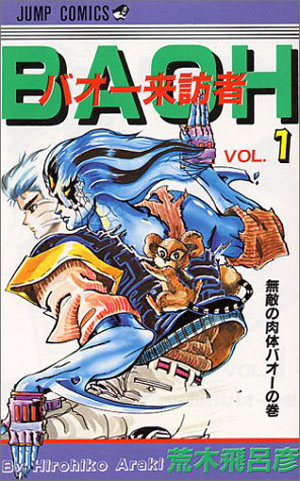
In the next few years, Araki serialized several short series with Weekly Shounen Jump. The most important of these are Cool Shock B.T., Baoh: The Visitor, and Gorgeous Irene. They showcase his growth as a young mangaka, the influence of abstract ‘80s fashion artists Antonio Lopez and Tony Viramontes on his style, and prototypes of what would become iconic JoJo characters later on.
Cool Shock B.T. follows the eponymous kid rascal B.T. and his hapless friend Koichi as they go on adventures around their town and cause endless amounts of questionably legal trouble. The success of this manga allowed Araki to move to Tokyo to pursue his career as a mangaka full time, and its main characters were later reworked into young Dio Brando and Koichi Hirose.
Baoh: The Visitor is perhaps the most well-known of Araki’s early works, despite being a financial letdown when first published in 1984. It tells the dark and very gory tale of Ikuro Hashikawa, who has an alien parasite in his body that allows him to transform into a superpowered demonic being called Baoh (which looks a bit like a mixture between Star Platinum and Kars). He escapes from a corrupt research laboratory with a psychic girl named Sumire and they must fight back against their captors and other superpowered test subjects to survive. The series was made into a one-episode OVA in 1989 and Ikuro/Baoh appears as a DLC fighter in the game JoJo’s Bizarre Adventure: All Star Battle. Hilariously, the narrator announces all of his attacks for him because Baoh can’t actually talk.
Gorgeous Irene stars the lovely assassin Irene, who uses her make-up powers to shapeshift into any woman on Earth and fires her fake nails at enemies like knives. Araki is somewhat embarrassed by portraying Irene as a stereotypical femme fatale, so he put a concerted effort into making his later female characters like Lisa Lisa and Jolyne much more complex and realistic. However, we do have this short serial to thank for the designs of Jonathan Joestar, Rudol von Stroheim, and the Pillar Men, as well as the Stand powers of Cinderella and Tusk.

The Bizarre Adventure Begins!
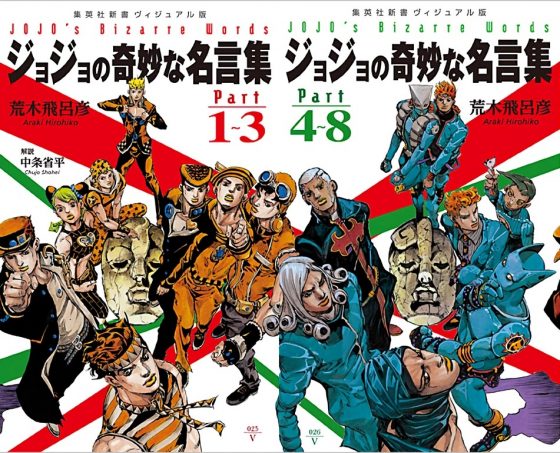
Araki’s first few manga serials are entertaining to read if you’re a dedicated fan and want to see where he started, but none of them were strong enough on their own to launch him into stardom. But in 1987, a new series finally brought him into the limelight: JoJo’s Bizarre Adventure! It started as a gothic horror story set in Victorian England – a far cry from the Westerns and modern sci-fi romps his readers were used to seeing from him.
This time, Araki crafted a grand adventure that used unique versions of kung fu, chi energy, and vampires to weave a tragic tale of brothers torn apart by clashing ideals. The male characters were ridiculously overmuscled, similar to Fist of the North Star’s Kenshiro as well as the American action movie stars popular at the time, but they carried an extra layer of melodramatic and androgynous camp that separated them from the competition. Who could resist Dio’s cartoonishly evil declarations or Jonathan’s honest schoolboy charm? Weekly Shounen Jump readers adored it and wanted more!
But instead of going the usual route for a serialized shounen manga by dragging along the story for the sake of ratings, Araki decided to end his current narrative after 44 chapters with Jonathan’s death and start anew with the story of his grandson Joseph. The two protagonists were designed to look almost identical so readers wouldn’t get confused and think Araki was writing an entirely new manga, but Joseph and his story were still very different from what had come before. The setting jumped forward 50 years and moved to America, Joseph himself was a cheeky trickster in contrast to Jonathan’s gentlemanly heroism, and the genre even changed from a horror melodrama to more of an Indiana Jones-style action-adventure. A few characters like Erina and Speedwagon carried over from the first story but, overall, this was a bold new step in storytelling that manga artists had never really attempted before. And luckily, this risk paid off in spades.
Evolution Over 30 Years
JoJo’s Bizarre Adventure has been a staple of Weekly Shounen Jump/Ultra Jump for more than 30 years. It’s one of the longest continuously published manga of all time but doesn’t feel like a slog to get through because Araki continues to innovate with each new part. He introduced Stands after he did everything he wanted to do with Hamon, gradually shifted his character designs to have more realistic proportions while still keeping his signature campy masculine style, and even rebooted the story’s entire universe after Stone Ocean to give himself a fresh start.
His writing has only gotten better over the years, too. Phantom Blood still holds up as a solid narrative, but the intricate Stand battles in Diamond is Unbreakable and the complex character growth in Steel Ball Run are clearly the work of an author who has used his decades of experience to continuously improve himself. You can even see a vertical slice of this evolution with Jotaro Kujo, who goes from an edgy badass teenager with a hidden heart of gold to a nuanced mentor/father whose icy attitude has alienated him from his loved ones.
Araki has also worked on a few other projects on the side, such as an anthology series called The Lives of Eccentrics, which chronicles the true lives of odd people such as Mary Winchester and Nicola Tesla. He has also collaborated with fashion brands like Gucci, presented an art exhibition at the Louvre in France, and drawn cover art for music albums and book series. But for the most part, Araki remains focused on his ever-changing magnum opus, JoJo’s Bizarre Adventure.
Final Thoughts
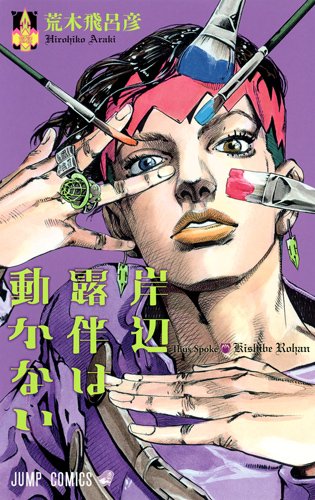
Araki clawed his way into Weekly Shounen Jump way back in 1980, and he’s grown into one of the most prolific manga artists of all time. He takes very good care of himself by exercising and eating well, and jokingly attributes his eternally young looks to Tokyo tap water and green tea. He has also been writing chapters on a monthly schedule for several years now, which lets him produce quality work without burning himself out. We hope he continues to share his creative and bizarre world with us for many years to come!
What did you think of our history of Hirohiko Araki? Have you read any of his other manga? What’s your favorite JoJo part? Let us know in the comments, and thanks so much for reading!
Recommended Post
5 Biggest "Araki Forgot" Moments in JoJo's Bizarre Adventure
Recommended Post


